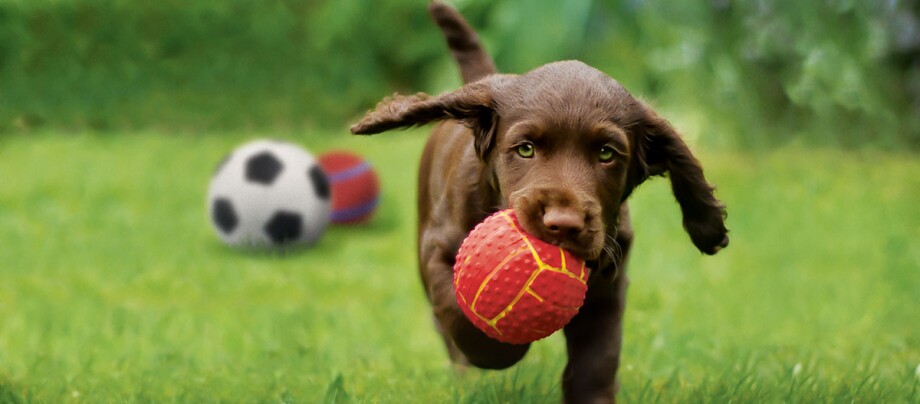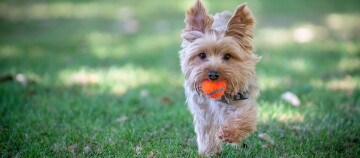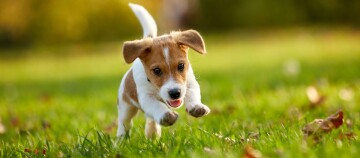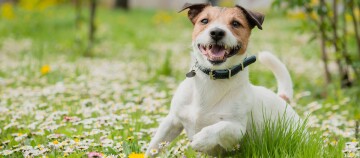Keeping Puppies Busy - How to Encourage Your Dog the Right Way
03.01.2023 - Reading time: 5 minutes

You are now living with a puppy and want to take perfect care of it and give the little explorer everything it needs. In addition to food, places to sleep, and training, the question then often arises of which games, how often and how long the new family member needs to be kept busy. First things first: even if your puppy is a bright four-legged friend who wants to play all day, it is still a “baby”, and although it ought to discover the world, it also needs a lot of rest. Besides, a puppy’s body is not yet ready to work out all day as its joints and bones are sensitive and growing.
Moving into a new home is already plenty of activity
When the puppy comes to you, he will only be about two months old. He has already learned a lot from his mother and siblings, but he has to discover the world in which he will live for the next ten to 15 years all over again. To do so, he has to accomplish a lot, because he comes into a completely foreign environment, with unfamiliar smells/scents and objects. He has to digest the farewell to his littermates and mother and find his way around all by himself. This means that when the puppy moves in with you, he doesn’t need any special activities at first, apart from exploring the new surroundings and getting to know his fellow residents.
How to behave properly – little 101 puppy
- Let him run around, ignore small missteps, praise him when he does something right and cuddle him when he lets you.
- Make him feel safe and secure and let him arrive calmly.
- Make sure he comes outside regularly to do his business, but don’t take him on long walks. In the first few days after moving in, the new environment is exciting enough for the puppy.
- The little dog also needs regular rest and sleep sessions. Basically, you can say that the puppy should rest about 20 hours a day and only be active for four hours a day.
Keeping your puppy busy after the settling-in period
As soon as your puppy has settled in, you can take him out to discover the world in small steps. Take him into the garden or outside for a few minutes and let him scurry around. Always make him feel safe in the new environment by being calm and relaxed. This will teach the young dog that there is no danger in unfamiliar territory. Every time the puppy goes out into the neighbourhood, get him used to doing his business outside by praising him or rewarding him with a treat. Between the fourth week of life and about the 16th week, the puppy is particularly receptive to learning new things and associating them positively. For this reason, you should first familiarise him with all the things that will now be part of his everyday life and that he may not yet know.
It is also helpful if your little dog comes into contact with strangers and socially compatible people as early as possible. Everything that your dog perceives as positive during this time will also stick in his memory as an adult. Also here, it’s important to take it slowly. For example, take your dog for a short car ride one day and have a friend visit with his/her four-legged friend another day. You should also get your dog used to the vet at an early stage, but this will already come about through the vaccination appointments.
Walks: varied and short
Puppies will keep themselves busy on a walk, as they will want to sniff and explore everything. Take your dog to different places for walks more frequently, sometimes to a forest path, sometimes to a field and other times to the market place. This way he will quickly learn to find his way around different environments. Keep in mind, however, that walks for puppies should be quite short. As a rule of thumb, you should walk your puppy for about five minutes at a time for each month of life. This means that a quarter of an hour walk is quite enough for a twelve-week-old dog. After that, it’s time to rest again to avoid overloading the skeleton and muscles of your four-legged friend.
Keeping puppies busy with play sessions
Besides discovery tours, playing together with you is the greatest pleasure of all for the puppy. For example, you can start with simple search games by giving food or treats around the home. You can also try to teach the dog to retrieve. Tugs-of-war and playing rough-and-tumble are also good puppy games. However, tug-of-war games are not suitable during teething, as they can lead to misalignment of the permanent teeth. Basically, these types of play also offer the opportunity to teach the dog limits and, for example, to train his bite inhibition. If the dog overdoes it in the game and bites too hard, say “Ouch” loudly and stop the game briefly. In this way, the dog learns quickly that he must take a step back if he wants to continue playing.
First commands to keep the puppy busy in a sensible way
Another useful activity is to teach the first commands such as “sit” or “stay”. It is also a good idea to take your little rascal to puppy school once a week. With all these active activities for your puppy, don’t forget that cuddling or extensive brushing are also pleasant activities for your four-legged friend. The same applies to playing: the dog should never be fully exhausted, but should experience short play sessions and then rest periods. Also, please never overtax your puppy.


